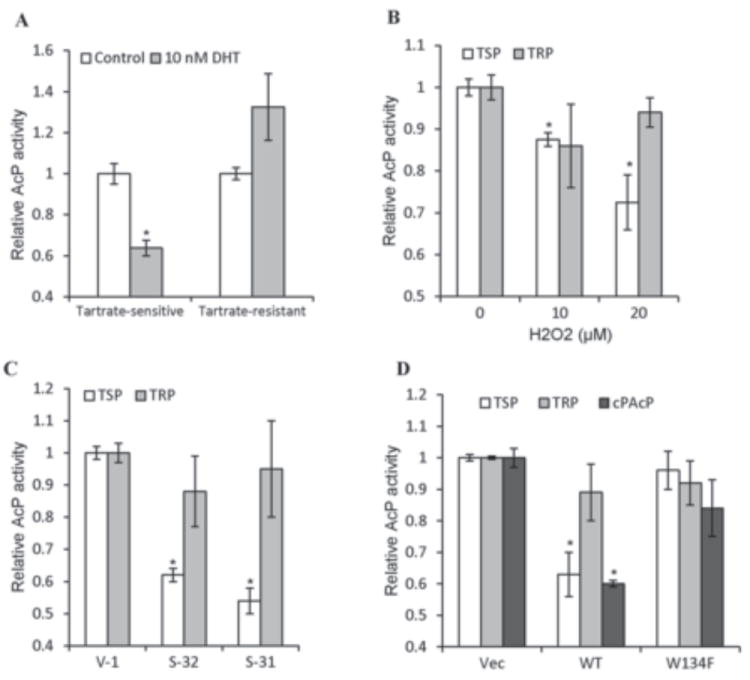Fig. 7.

Acid phosphatase activities in steroid- and H2O2-treated and p66Shc cDNA-transfected C-33 cells. (A) LNCaP C-33 cells were seeded in regular medium for 3 days and then steroid-starved for 2 days. Cells were fed with fresh SR medium and treated with 10 nM DHT for 2 days. Total cell lysate proteins were used to analyze L-(+)-tartrate-sensitive (TSP) and tartrate-resistant AcP (TRP) activities in each cell lysate. Similar results were obtained from at least three sets of independent experiments. (n=2×3, *p<0.05). (B) LNCaP C-33 cells were seeded in regular medium for 3 days and then steroid-starved for 2 days. Cells were fed with fresh SR medium and treated with H2O2 for 24 h. Total cell lysate proteins were used to analyze H2O2 effect on TSP and TRP activities. Similar results were obtained from 3 sets of independent experiments. (*p<0.05). (C) Total cell lysate proteins of p66Shc stable subclone S-31 and S-32 cells plus control V-1 cells were analyzed for TSP and TRP phosphatase activity. Similar results were obtained from at least three sets of independent experiments. (*p<0.05). (D) LNCaP C-33 cells were transiently transfected with WT p66Shc (WT) or its W134F redox-defective mutant cDNA (W134F). Another control cells were transfected with vector alone (Vec). After 48 h, cells were harvested for analyzing TSP and TRP activities. An aliquot of each cell lysate proteins was immunoprecipitaed by anti-PAcP Ab and the immunocomplexes were analyzed for cPAcP specific phosphatase activity. Similar results were obtained from at least three sets of independent experiments. (*p<0.01).
